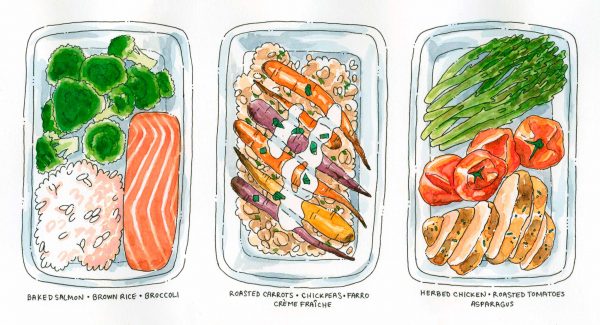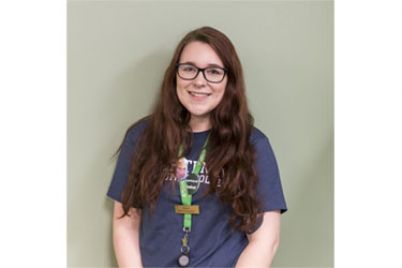
Illustration by Gina Hewitt | Washtenaw Voice
By Catherine Engstrom-Hadley
Staff Writer
Eating healthy and affordably can be hard for anyone, and for students with packed schedules it can be an even bigger struggle.
Meal planning saves time and money for students who need a lunch on the go, and easily prepared meals for when they get home.
Constance Henderson holds a Ph.D. in integrative nutrition, and teaches nutritional classes through the health and fitness center at WCC, shared some tips for mealing planning and explained how the nutrition choices we make now impact our health later in life.
“How you eat now sets your body up for health challenges or health success later in life,” said Henderson.
Every plan is different depending on the person, but when making your meal plan Henderson suggests starting with a protein and building from there.
“Build the plan around needs first, play foods after. Your body will not be content without the essentials,” said Henderson.
Henderson suggests using the Environmental Working Group’s shopper’s guide to pesticides in produce, which indicates “the dirty dozen”—produce with higher amounts of pesticide residue, which therefore, should be bought organic, and the “clean 15”—produce with the least likelihood of residue, and making it less problematic to buy conventionally.
Henderson also advised to always wash produce before eating or cooking with it.
Buying organic can be more expensive, but taking advantage of deals and local farmers markets can help cut that cost. Look for flash frozen vegetables, or if something you use is on sale fresh, buy and freeze extra.
Buying in bulk can also prove to be a cost effective choice for many people. In fact, buying dry beans instead of canned is healthier and cheaper.
“Soak them overnight so they sprout, making the beans more nutrient-rich,” said Henderson.
“Eating healthy is a form of self-love and great self-care,” Henderson said. “Create a safety net for yourself, think of what you need and plan for it.”
Henderson teaches many different nutrition classes through the WCC Fitness Center year-round. For information about nutritional counseling and classes Henderson offers, call 734-975-995 or visit the service desk at the Fitness Center.
Guide to meal planning
Based on Constance Henderson’s nutrition tips
- Build meals around protein, good fats and fiber.
- Protein, which is necessary for energy, can come from a variety of sources. While meat can be expensive, one pound of salmon contains four servings of protein and provides good fat, too. Beans also make a great source of meat-free protein and also contain fiber.
- Good fats can be found in omega 3s, olive oil and even coconut fat,
- Fiber, which is essential for feeding your healthy gut bacteria can be found in a variety of vegetables, including avocados and broccoli.
- Once you have those bases covered, you can add in the flavors and seasonings of your preference.
- Pick a day for planning your meal and shopping, and prepare the bulk of the ingredients at the start of the week.
- Look at the current sales at the store where you shop. See which proteins are on sale and keep them in mind while making your list.
- Consider cooking larger batches that will last for a few days.
- Freezing large batches of certain foods for later, like soup and chili, can help them keep for longer periods of time.
- Use chili as a good source of fiber and protein.
- Cook with whole chickens and later using the bones to make bone broth.
- Wash and cut vegetables, soak beans, marinade and portion your protein a few days before.
- Some people prepack jar salads or portion out contents for morning smoothies ahead of time.
- The darker the color of the vegetables, the higher their nutritional value.

